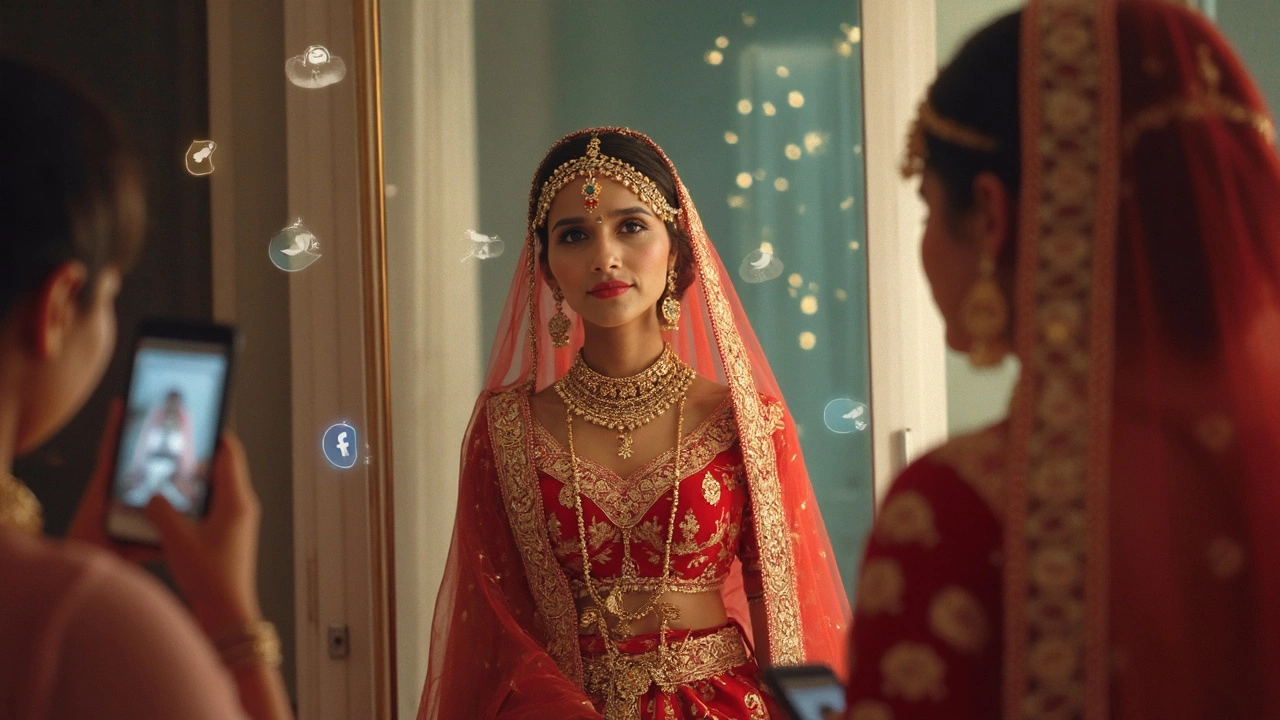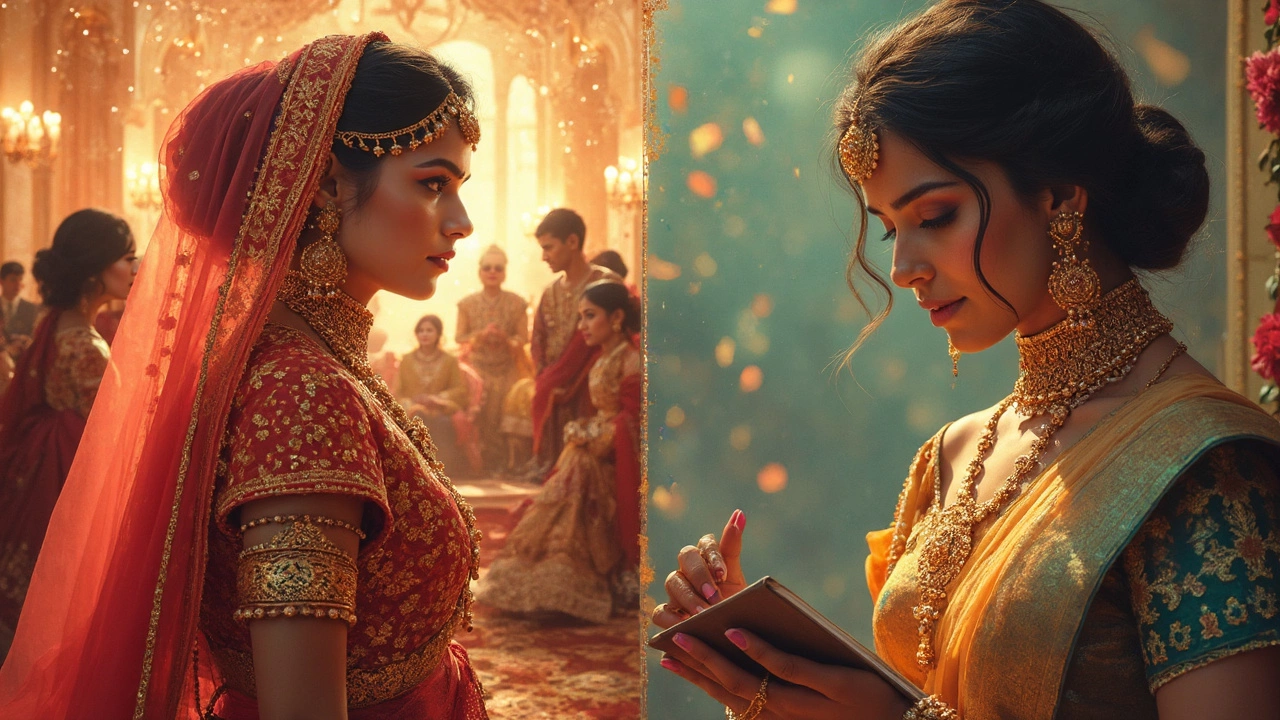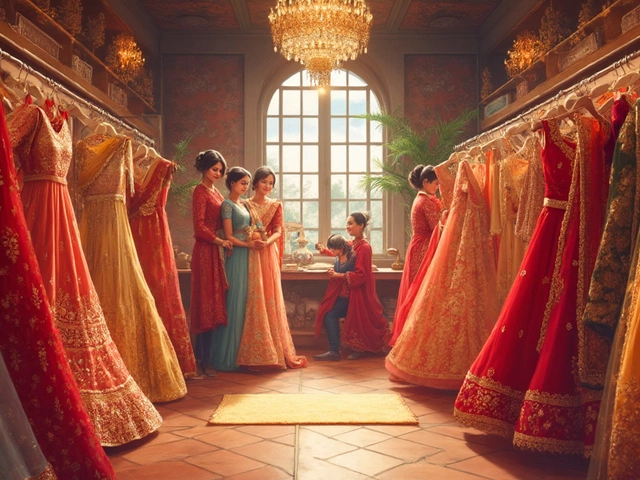
Ever peeked at a wedding dress price tag and felt your jaw drop? You're not alone. So many brides shell out thousands for one dress they’ll (probably) only wear once. But what’s behind this huge spend? The answer isn’t just lace and fancy labels. There’s a whole mix of feelings, expectations, and, let’s be honest, a little bit of Pinterest and Instagram thrown in.
If you’re wedding planning, you’re probably torn between that dream dress and the reality of your bank account. Maybe you want to wow your guests or feel like royalty, or maybe family and friends have opinions. Knowing what makes a dress “expensive” actually helps when it’s time to shop—trust me, you don’t want to pay extra just because someone says “bridal” before “dress.” Let’s break down what really drives those prices and how you can make smarter choices—without missing out on your dream look.
- The Emotional Weight of the Dress
- Pressure From Social Media and Traditions
- What Actually Makes Dresses So Pricey?
- Do Pricier Dresses Really Make a Difference?
- Smart Ways to Shop and Save Money
The Emotional Weight of the Dress
If you ask someone why they spent so much on their bridal dress, don’t expect a simple answer. For lots of brides, this isn’t just any dress. It’s a symbol of a huge day, sometimes loaded with years of dreaming, family expectations, or even pressure they didn’t realize was there face-to-face with a price tag.
Psychologists point out that weddings trigger big feelings—excitement, hope, and yes, a little stress. Dr. Terri Orbuch, a well-known marriage researcher, told Brides magazine,
“The wedding dress becomes an emotional centerpiece for many women, representing their identity and dreams about the big day.”
More than half of brides in the U.S. say they’ve thought about their dream dress for years before they actually shop for it. According to a 2024 survey by The Knot, brides reported spending an average of $2,350 on a wedding dress in the U.S.—and 17% went over $3,000. This isn’t just about style. A lot of brides talk about ‘that feeling’—the moment they put on a dress and just know.
Here’s a quick look at what brides say influences their decision to splurge:
- Childhood memories of watching wedding movies and flipping through bridal magazines.
- Cultural or family traditions—sometimes parents, especially moms, get pretty invested in ‘the dress moment.’
- The pressure to feel unique and unforgettable for one special day.
Check out these real numbers:
| Reason for Choosing Expensive Dress | Percentage of Brides (2024, USA) |
|---|---|
| Wanted to feel special | 65% |
| Family input or pressure | 41% |
| Followed traditions | 33% |
| Influenced by media/social media | 27% |
So, when it comes to that wedding dress shopping moment, there’s way more going on than fabric and fit. There’s a whole mix of memories, traditions, and hopes wrapped up in those layers of tulle and satin. That’s why the emotional weight is often heavier than the actual dress itself.
Pressure From Social Media and Traditions
If you’ve spent even five minutes scrolling through Instagram or TikTok lately, you’ve seen jaw-dropping wedding dress reveals. It’s almost like there’s an unspoken competition: who can wear the prettiest, priciest dress? Social media isn’t just fun—it's changing how brides pick their dresses. A recent survey from The Knot showed that 78% of engaged couples get wedding inspiration online, with more than half saying they feel some pressure to impress on camera.
It’s not just about looking great for friends and family in the room anymore. Now, you’re thinking about the 1,000+ people who might see the pictures online. That can push some brides to spend way more than they planned.
- Some designers have said they notice an immediate spike in interest after a dress goes viral. Remember the huge fuss over Hailey Bieber’s wedding gown? Searches for similar styles shot up by 80% after she posted her photos on Instagram.
- Influencers and celebrities set a standard that feels impossible for the average bride, but the urge to match what you see online is real—especially when those posts get thousands of likes.
- Photo-friendly details like long trains, sparkles, and dramatic veils often come with a big price tag, mostly because they’re seen as “must-haves” for online wow factor.
Then there’s tradition. Every family has their own version of what a bridal dress should be. Maybe your mom kept her dress for you, or maybe there’s pressure to stick with white. In lots of cultures, spending a lot on the dress shows you value the event and family. Sometimes it’s not even about the bride’s taste but about fitting in with what everyone expects.
| Source | Interesting Fact |
|---|---|
| The Knot, 2024 | Average spend on wedding dresses in the U.S. rose to $2,000, a 9% jump, partly linked to social sharing. |
| Instagram Insights, 2023 | Over 80 million posts with the hashtag #weddingdress were shared last year. |
| Zola Wedding Study, 2024 | 62% of brides admit comparing their dress to what they see on social feeds. |
If you’re feeling the weight of all those posts and family traditions, you’re definitely not the only one. The trick is figuring out which expectations matter to you, and which are just internet noise.

What Actually Makes Dresses So Pricey?
If you’ve ever looked at bridal shop windows and wondered why some dresses cost more than a car, you’re not just seeing pretty fabric. There’s real stuff driving up the cost, and it isn’t all about brand names or “bridal” markup—though, well, sometimes it is. Let’s peel back the layers and see what’s eating up your wedding budget.
The main reasons behind high prices usually break down like this:
- Quality of materials: Wedding dresses often use pricier stuff like silk, Chantilly lace, hand-beaded details, and imported tulle. These aren’t what you’ll find on a rack at a regular clothing store. The better (and more unique) the fabric, the bigger the price tag.
- Labor cost and craftsmanship: Some gowns take over 100 hours to sew, bead, or embroider—by hand. Skilled workers don’t come cheap, and all that labor shows up on your bill.
- Design house and brand: Designers with big names (think Vera Wang, Monique Lhuillier, or Galia Lahav) can ask for higher prices. You’re often paying for the status and the “wow” factor their labels carry.
- Customization and alterations: Even standard gowns usually need fitting, but if you want custom details or a made-to-measure gown, expect another chunk of change added to the final cost.
Here’s a look at what goes into a typical bridal dress price, just to give you an idea of where the money goes:
| Cost Factor | Average % of Price |
|---|---|
| Materials | 20-40% |
| Labor (construction, embellishments) | 30-50% |
| Designer/Brand Name | 10-20% |
| Store Markup & Overhead | 15-30% |
| Alterations | 5-10% |
Something surprising: a study by The Knot found the average US wedding dress cost $1,900 in 2024, but plenty of luxury options can go over $10,000—especially if there’s lots of beading or one-of-a-kind details. And yes, “wedding” instantly doubles or triples what someone could charge for a similar dress at a regular formal store.
Bottom line? You’re paying for both materials and hours of work, but also a bit for the experience and the “bridal” vibe. If you want to save money, focus on simpler designs, avoid too much custom work, and keep an eye out for sample sales or pre-owned dresses—they’re usually made from the same quality stuff without the jaw-dropping price tag.
Do Pricier Dresses Really Make a Difference?
People always say you get what you pay for, but does that ring true for wedding dresses? Here’s the scoop: expensive bridal dresses usually stand out in three main areas—materials, fit, and experience.
First off, if you spend more, you’re likely getting higher-quality fabric. Think about the difference between real silk and cheap polyester. The pricier stuff generally feels softer, moves better, and photographs beautifully. According to a 2024 survey from Brides.com, 80% of brides who spent over $2,000 on a dress noticed a big difference in material feel and comfort compared to cheaper options.
The next thing is the fit. Luxury bridal dresses are often made-to-measure or have extra fittings included in the price. That means less pinching, better support, and a more flattering look overall. Off-the-rack dresses just don’t mold to your body the same way. Many high-end designers, like Vera Wang and Pronovias, include two or three alteration appointments for free, which adds up fast if you normally pay for them separately.
Some brands know how to make a bride feel special. It’s not just about the dress itself—the whole process, from appointments to unboxing, is part of that premium experience. You’ll often get private fitting rooms, bubbles, and way more attention than in a regular shop.
| Dress Price Range | Average Fitting Appointments | Material Quality |
|---|---|---|
| Under $1,000 | 1 | Basic (Synthetic blends) |
| $1,000–$3,000 | 2 | Mid-range (Some natural fabrics) |
| $3,000+ | 3+ | Luxury (Silk, hand beading, lace) |
But here’s the kicker: price doesn’t guarantee you’ll love the dress more or feel better in it. I know brides who wore $400 dresses and looked just as happy—and stunning—as those who spent five grand. Your comfort and confidence trump price tags every time. Want my tip? Try on both affordable and high-end options. Sometimes that bridal dress you fall in love with doesn’t have the scariest price tag.

Smart Ways to Shop and Save Money
Shopping for a wedding dress shouldn’t mean ending up with a blown budget or buyer’s regret. The good news: There are plenty of tricks to snag an amazing dress without paying a small fortune. Here’s how you can keep things affordable, feel great, and actually love what you wear down the aisle.
- Start Early. Give yourself six to twelve months, if possible. You’ll have time to catch sales and avoid pricey rush fees. According to The Knot’s 2024 study, brides who shopped early spent an average of 18% less.
- Think Outside the Bridal Shop. Department stores and boutique evening-wear shops often have white or ivory dresses with way smaller price tags. Plus, sample sales at bridal shops can slash prices by 40–70%.
- Consider Secondhand. Sites like Stillwhite and Nearly Newlywed are packed with designer wedding dresses (usually worn once) at major markdowns. You’re also cutting down on waste, which feels good too.
- Rent Instead of Buying. Renting isn’t just for tuxedos. Websites like Rent the Runway let you try gorgeous bridal looks for way less, sometimes under $200.
- Skip Major Alterations. Choose a dress that fits close to your current measurements. The more work it needs, the faster your costs climb.
- DIY Accessories. Dresses get expensive fast if you add custom veils, belts, or headpieces. Save money by shopping online or making something unique yourself.
How do these options stack up when it comes to spending? Check out these 2024 average costs for common dress shopping options:
| Option | Average Cost (USD) |
|---|---|
| Full-Price Bridal Shop | $1,800 |
| Sample Sale | $600 |
| Secondhand Dress | $800 |
| Dress Rental | $200 |
Staying open-minded, planning ahead, and being a little creative can make a huge difference. When you see a price tag, remember: the name “bridal dress” doesn’t guarantee a better experience. The best dress is the one you love—and can actually afford.



Comments
Post Comment